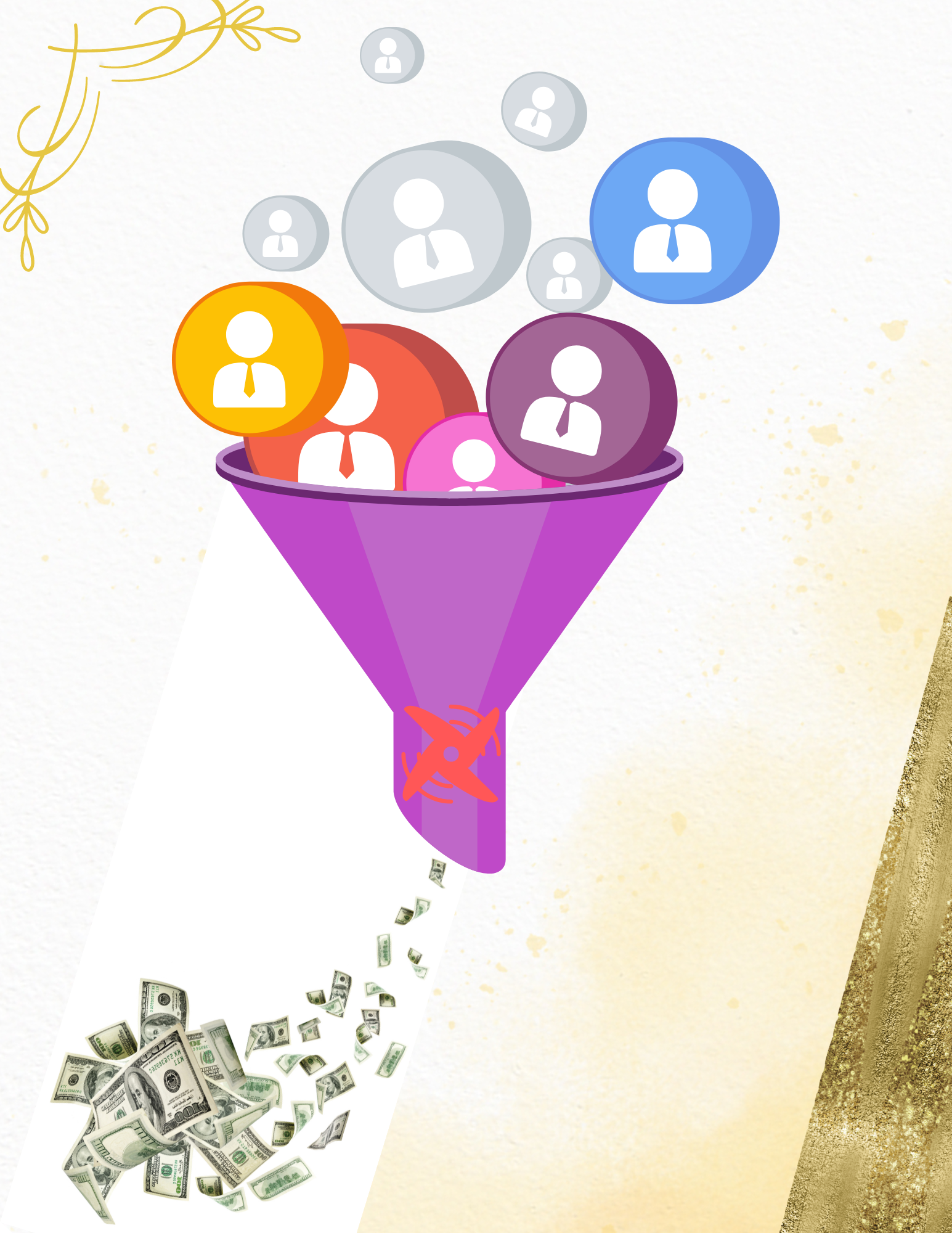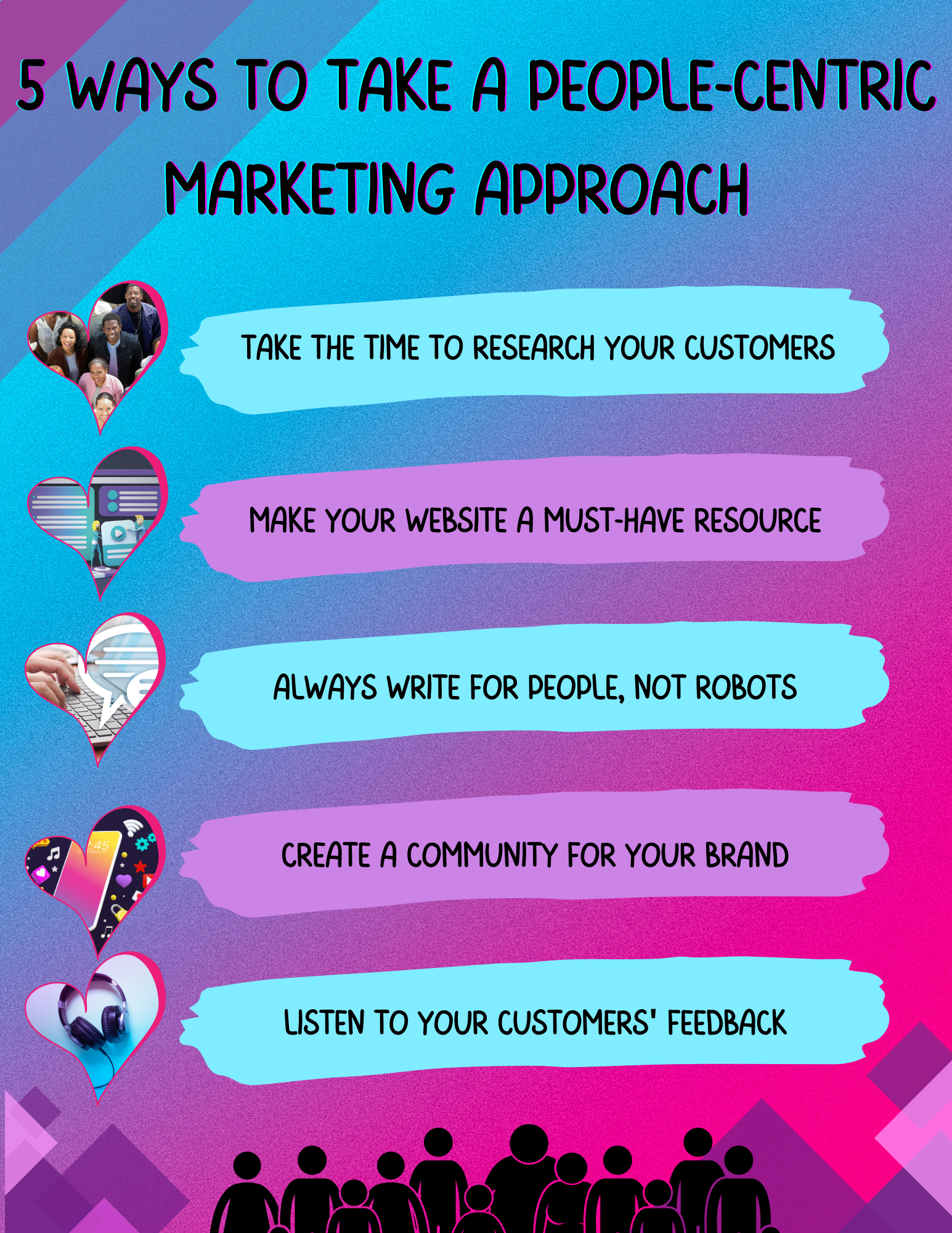
When you created your company, what did you set out to do?
Did you simply want to sell products and services to make as much money as possible? Or was there something inside you wanting to help people solve their problems?
If it’s the latter, the sales funnel approach likely prevents you from feeling good about providing the leading solutions in your industry. The funnel turns people into leads, after all, taking complex humans and reducing them into predictable psychological patterns.
Getting back to a people-centric marketing approach is the way to go then if you want to truly satisfy your mission of serving as a helper above all else. With that approach, you focus on building a supportive community for your customers rather than simply driving sales.
The sales will follow, believe me. But in the meantime, you can position your brand as the top place to go for helpful advice and the products and services to match.
Ready to see just how this works? Here’s what you need to know about ditching the sales funnel in favor of building your brand community.
Table of Contents
- What is a Sales Funnel—and Why’s It So Dang Popular?
- Skip the Playground, Think: Mosh Pit
- Is the A to B Sales Funnel Dead?
- How to Take a People-Centric Approach—Always
- Put People First to Serve as a Trusted Problem Solver
What is a Sales Funnel—and Why’s It So Dang Popular?

The sales funnel is the widely accepted map of the purchase journey from beginning to end. E. St. Elmo Lewis came up with the funnel way back in 1898 while on a mission to educate people on the value of advertising.
Lewis’s sales funnel was known as the AIDA model, which stands for:
- Awareness
- Interest
- Desire
- Action
Loyalty was left out of the funnel because the idea was to follow the customer journey just until they completed their purchase. Nurturing the customer and building brand loyalty was another story altogether.
A lot has changed since then, yet the sales funnel persists.
Why?
The sales funnel offers a snapshot of what the purchase journey would look like in a perfect world. It effectively transforms complex people into leads that can get easily poured directly from point A to point B.
Even if that did work in the past, it’s not exactly a viable strategy anymore.
The modern purchase journey is not a trip from A to B. It’s a whirlwind of product and service options, brand messaging, and conflicting product and service reviews coming in hard and fast from every direction.
People have many of their own personal fears, uncertainties, and doubts (FUD) to overcome, too, causing them to double back to prior stages more often than not.
Five Stages of the Purchase Funnel
Also well-known as the purchase funnel, the sales funnel evolved through the years. Loyalty came on the scene, for example, as soon as marketing pros understood the value of customer retention.
Beyond that, the names of the stages shifted a bit to better reflect the buyer’s journey, as introduced by the inbound content marketing world. In fact, the stages often change depending on whom you ask, especially as marketers aim to set themselves apart from the rest.
When paired with the buyer’s journey, the five stages of the purchase funnel are:
- Awareness is the first inkling someone has that there’s a problem to solve, and it’s likely going to require the purchase of one or more products or services.
- Consideration begins when people start looking for solutions to the problem in question and weighing their options.
- Decision is the stage when people compare potential solutions to decide which of the top products or services will fully resolve their problem.
- Purchase happens your customers complete the checkout process to finalize the sale and await to receive the requested products or services.
- Loyalty occurs after the completed purchase as brands do all they can to reengage with their customers and provide all the support needed to truly enjoy the products and services.
Sometimes, people will move through every stage of the journey at least once but often not in perfect order.
Other times, they may jump from awareness straight to completing their purchase and never return to your company again. Not ideal, but it does happen, especially if you don’t nurture your customers.
The only thing you can truly count on is your customers failing to cleanly move through the funnel without returning to any prior stages. It’s just not how things work anymore—if they ever did.
Where the Sales Funnel Goes Wrong
When using the sales funnel to guide your marketing efforts, you’re working on the assumption that people will move through the stages in order:
Awareness —> Consideration —> Decision —> Purchase —> Loyalty. Just like that.
So, when your customers hit a roadblock and reverse course, your marketing efforts flop, leaving you back at square one. As that occurs, your customers may quickly find that your content doesn’t fulfill their need for support at that moment.
What happens then? Your customers go straight to your competitors in hopes that they have the right resources in place to help them make an excellent purchase decision.
FUD, FOMO, and Anything Goes to Land the Sale
Perhaps the worst part of the sales funnel is how it’s used in today’s busy marketing world. All too often, marketing tactics use people’s psychology against them, effectively manipulating them into completing the purchase without another thought.
The manipulation starts with an understanding that fear, uncertainty, and doubt cloud the minds of people trying to solve their current dilemmas.
Using FUD in marketing might look like:
- Fear of Missing Out (FOMO): “24-hour flash sale! Limited stock, order now!”
The result? If your customers don’t hurry, they’ll surely miss out, often causing them to stress about making a decision faster than they’re comfortable with.
- Uncertainty About the Future: “Don’t leave your family’s well-being to chance, secure your future today with our shelf-stable emergency food supply.”
What happens then? Your customers feel like they’re putting their whole family at risk if they decide not to make the purchase, which makes them feel guilty and worried about what could happen in the future.
- Sowing Doubts About Competitors: “Are you looking for a safe and reliable car? While other brands may claim to be the best, have you ever stopped to ask if they really live up to their promises?”
Why is this bad? Your customers now doubt if the other brands offer safe, reliable cars, likely negating their research up to that point and leaving them uncertain about what to choose.
Instilling FUD in customers’ minds may drive sales, but it doesn’t help people feel good about their purchase or want to stay loyal to the brand. It’s a short-sighted tactic that eventually backfires when people find alternate brands that show them respect.
People are already stressed about having to solve the problem in the first place. They’re worried about making the right choice. And they’re frustrated that the entire process is taking too long, potentially resulting in higher prices, out-of-stock products, or the problem just plain getting worse.
So, there’s no reason to bully them into making a purchase.
What people need in that moment is a helping hand—someone there to propose great solutions and provide compassionate support every step of the way.
Your brand could be that special someone, just as long as you’re committed to creating a positive buyer’s journey built with flexibility in mind.
Skip the Playground, Think: Mosh Pit

To truly create the best buyer’s journey for your customers, you may need to skip the A to B sales funnel and go with a much less linear approach.
To do that effectively, think of the buyer’s journey as a wild and crazy mosh pit rather than a fun and friendly playground.
The Mosh Pit Buyer’s Journey
You’ve likely heard of the buyer’s journey being referred to as a playground. And that’s likely true when buying a video game you’ve wanted forever or a snail orb (Snorb, anyone?) that simply speaks to you.
The content playground idea works well for these situations because it allows much more flexibility than the sales funnel, and it’s just plain fun.
When buying a brand-new washer or dryer set? Trying to fix a car in a sorry state of disrepair? Figuring out what flea treatment to get your beloved dog? The playground analogy simply does. not. work.
Instead, those journeys feel much more like getting unexpectedly sucked into an out-of-control mosh pit filled with FUD windmilling about.
One minute, your customers are jamming on the edge of the mosh pit. The next? They’re thrown in the center and have to violently mosh their way out. Not an easy thing to do, as FUD bumps them back into the center time and again.
While some might find that wild and crazy environment super fun and exciting, it’s certainly not for everyone, especially when the problem comes as a complete surprise.
Want to Help? Reach Out Your Hand
Upon seeing people enter the marketing mosh pit, your brand can be that mosher everyone loves. The one who looks out for people in trouble and helps pick them up when they fall down.
You do that by positioning your brand as a key source of support for your customers. In all you do, you should aim to help people solve their problems, not simply learn why they should purchase your products or services.
Do that right, and you’ll land the sale. Your customers will feel good about making their purchases. And everyone will benefit in the end as you take a people-first approach to marketing your brand.
Is the A to B Sales Funnel Dead?
The sales funnel is not dead, but it’s not the right choice for every journey.
You cannot just try to pour people from A to B like grains of sand through a funnel.
If FUD appears, they’ll try to scurry back up the slick funnel walls and perhaps give up on your brand altogether.
And if they do that, they’ll undoubtedly go to competitors ready to ease challenges that may arise in a more chaotic buyer’s journey.
Instead, let the sales funnel guide your content creation process.
Then, position your content in a way that helps people to overcome the FUD as they decide how to best complete their purchase.
How to Take a People-Centric Approach—Always
Now that you’re ready to take a people-centric approach to marketing, how do you do it? Here’s five smart tactics to help you get started.

Do Audience Research
Before you can help your customers, you need to get to know them on a personal level.
To start, you must understand your target audience’s demographics, needs, and preferences. Then, go even deeper by exploring their major pain points and the barriers that prevent them from completing their purchases.
To do that effectively, create a target buyer persona and define their jobs to be done.
The buyer persona will be a one-sheet snapshot of your customers’ key characteristics. Jobs to be done, on the other hand, will act as a guide on how to best present your offerings as solutions to your customers’ pain points.
Make Your Website a Must-Have Resource
Your website is a portal into your brand’s world. It’s a place where people should be able to go to get all the info they could ever need about your products and services.
If you can make that happen, your customers will only have eyes for your brand. They will never have to turn to your competitors to find the info they need to complete their purchase with confidence and enjoy their order to the fullest.
Start with three to five well-designed core pages, like:
- Home
- About
- Products
- Services
- Contact
Then, go one step further by building a resource page as well. Your resource page should serve as the home for all your product demos, tutorials, FAQs, and other key resources needed for your products and services.
You can link out those resource pages to your product listings and the like if you want. And you can refer to them in emails, on social media, and through other avenues as you engage with your customers.
Write for People, Not Robots
Do you want to create SEO content that serves as a key resource for your customers? Or are you simply trying to impress Google’s robots?
If you’re Google focused, it’s time to skip trying to woo the robots with slick tricks and simply create content that helps your customers resolve their pain points. For bonus points, aim to resolve their fears, uncertainties, and doubts by answering all their questions before they have a chance to ask them.
Your content will work double duty—increasing your page ranking and speaking to your customers’ needs—if you ensure it’s the best page on the internet for that topic.
Pro Tip: Fully satisfy the search query, stay on topic, add all the best SEO elements, and use easy-to-understand language to tick all the boxes for the robots and your customers.
Create a Community for Your Brand
Your brand can be more than a place to buy products and services that solve people’s problems. You can turn it into a living, breathing entity with a genuinely loyal following.
All you have to do is employ these tactics to create a community for your brand:
- Use social media to connect with people
- Create exclusive networking and chat groups
- Sponsor virtual and in-person community events
- Establish a brand ambassador program
No matter how you create your community, aim to engage with your customers on a one-to-one basis as much as reasonably possible.
Ideally, you should check in on your social media channels, networking groups, and chat channels to say hello and participate in the conversation daily, if not more often.
Listen to Your Customers and Apply Their Feedback
Your customers are the heartbeat of your brand.
So, you need to know exactly what they think about your products and services, marketing efforts, and brand community happenings.
Otherwise, you could keep doing the same old thing without realizing that it’s simply not resonating. Or worse yet, harming your brand reputation, engagement, and customer loyalty.
To get feedback from your customers:
- Send out surveys once or twice a year that offers incentives for participating
- Ask customers to provide honest reviews on social media, Yelp, and the like
- Perform social listening on all your customers’ preferred media channels
- Talk to your customers directly when they email or come to your business
Record all the feedback you get and refer back to it often. Resolve any issues that arise more than once to keep minor problems from worsening. Make any and all improvements with your customer feedback in mind.
Through that process, you’ll continually improve your brand and ensure you’re always taking a people-centric approach.
Don’t Just Create a Sales Funnel—Put People First
When you help solve people’s problems, sales will follow, as will word-of-mouth advertising and true brand loyalty. The key is skipping the A to B funnels, FUD, and aggressive sales tactics to become a source of customer support.
You want your customers to know that you’re always there to offer gentle guidance whether they want to make their purchase now, in the future, or not at all. As people see your brand as a trusted helper, they’re more likely to complete their purchase and come back whenever they have another problem to solve.
But who’s here to be your helper? Jetura Media, of course! Get in touch today to start planning how to lift your customers up and help them see your products and services as the top solutions to their problems.
